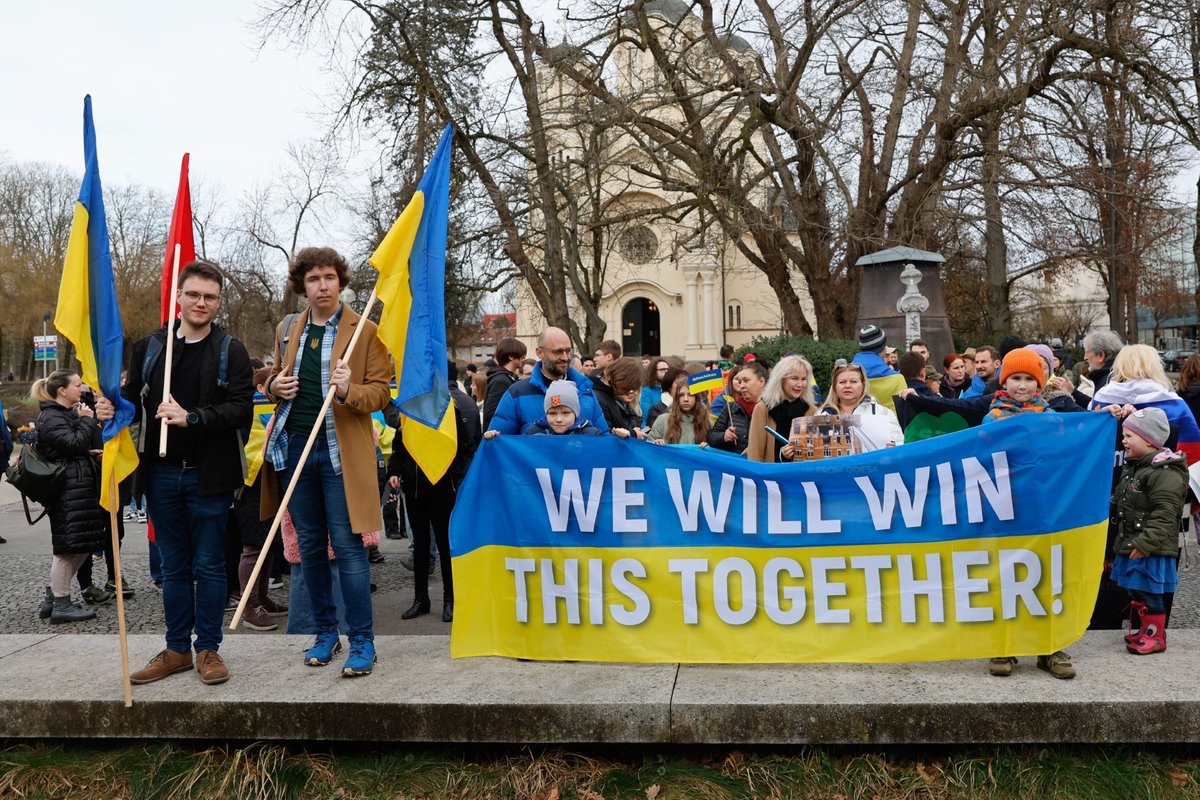Legal Basis for Ukraine’s Peace Formula

Authors: Sindija Beta and Dr. Paul R. Williams, Public International Law & Policy Group
Introduction
In October 2022, Ukraine’s President Volodymyr Zelenskyy announced to the world Ukraine’s vision for peace. This 10-point Peace Formula provides a clear and comprehensive outline for long-lasting peace and stability within the region. Among these points are concerns such as nuclear security, territorial integrity, return of prisoners of war and other forcibly displaced Ukrainians (including children), and accountability for perpetrators of atrocity crimes.
Ukraine’s Peace Formula is not the only model that has been proposed for the conclusion of the war. In mid-March 2024, Russia proposed a “peace plan” that called for Ukraine’s complete and unconditional surrender, the dissolution of the Ukrainian government, and Ukraine’s recognition internationally as part of Russia’s territory, among other demands. In February 2023, China released its proposal for peace in Ukraine, and in the summer of 2023, an African Peace Delegation traveled to Ukraine and Russia to advocate for a peaceful solution to the war (although details of the delegation’s proposed peace plan have not been made public).
All of the plans and proposals reflect their own countries’ and regions’ priorities. However, Ukraine’s Peace Formula is the model most consistent with well-founded principles of international law. This article outlines the legal basis underpinning the Peace Formula.
What is the Peace Formula asking?
Ukraine’s Peace Formula posits that a just and durable peace will require Russia to guarantee nuclear safety, food and energy security, the release of all prisoners and civilian deportees, and restoration of Ukraine’s territorial integrity and withdrawal of Russian troops, as well as the protection of the environment and prevention of further aggression. Likewise, the Peace Formula provides that no crime perpetrated during the war can be left unpunished.
The 10 points of Ukraine’s Peace Formula provide context for why Russia’s compliance with these guarantees is so important for Ukraine’s future safety and security. Namely, during the war, Russia has threatened international security not only through its acts of aggression but also by creating highly unstable and even dangerous conditions in Ukraine’s nuclear plants and by causing severe destruction of Ukraine’s environment.
Moreover, Russia’s forcible transfer of children and other civilians from the occupied territories along with its widespread destruction of Ukraine’s energy infrastructure and general disruption of the global food supply chain have caused uproar and condemnation from the global community. The International Criminal Court, for instance, has issued arrest warrants against four high-level Russian officials, including President Vladimir Putin, related to the unlawful deportation of children and attacks on civilians and civilian objects. The UN General Assembly also passed a resolution in late 2022 declaring that Russia must “bear the legal consequences of all of its internationally wrongful acts, including making reparation for the injury, including any damage, caused by such acts.”
The Peace Formula under International Law
Ukraine’s position as outlined in the Peace Formula is consistent with international legal principles and norms. In particular, Points 5, 6, and 9 of the Peace Formula—concerning the restoration of Ukraine’s territorial integrity, cessation of hostilities, and permanent withdrawal of Russian troops—are consistent with the international prohibition on the use of force and aggression.
The UN is founded upon principles of sovereignty and territorial integrity of its members and the UN Charter establishes that members of the United Nations may not resort to the use of force in international relations. UN General Assembly Resolution 3314 (XXIX) further asserts that one of the fundamental purposes of the United Nations is to maintain international peace and security and to take collective measures to suppress acts of aggression or other breaches of the peace, defining aggression to mean the use of armed force against, among other things, the territorial integrity of another state.
Other points in the Peace Formula are grounded in principles of international humanitarian and human rights law. For instance, special protections exist for works or installations containing “dangerous forces,” such as dams, dykes, and nuclear power plants. Russian destruction of the Nova Kakhovka Dam and endangering the Zaporizhzhia Nuclear Power Plant are in violation of these protections. Under no circumstances may such sites be the target of military attack or occupation, even where such sites are military objectives. Such prohibitions align with Points 1 and 8 of the Peace Formula regarding nuclear safety and environmental protection.
Furthermore, all civilians and civilian objects enjoy robust protections under the Geneva Conventions. The Universal Declaration of Human Rights also provides for “the right to a standard of living adequate for the health and well-being of himself and of his family.” Ukraine’s expectation under Points 1, 2, and 3—regarding the protection of its energy and nuclear infrastructure, agricultural lands, and infrastructure for exporting goods—that Russia will respect and safeguard these rights is in line with international obligations.
The Geneva Conventions likewise prohibit an occupying power from forcibly transferring populations from one territory to another, and they provide several protections for prisoners of war, including the rule that they be released at the end of active hostilities. The UN Convention on the Rights of the Child specifically requires states to combat the illegal transfer of children and requires that those illegally transferred are returned. These Conventions support Ukraine’s position under Point 4 that all detained civilians (most notably, children) must be immediately released, and that all prisoners of war must be released at the end of the war.
Despite the relative nascency of an international environmental legal framework, Russia’s continuous destruction of Ukraine’s environment is contrary to various legal instruments and norms. The right to a healthy environment is protected as an element of the right to life in a number of international human rights treaties, and causing severe damage to the environment amounts to a war crime under international humanitarian law. States are prohibited from using any environmental modification techniques in times of conflict that have “widespread, long-lasting or severe effects” on any other state. As such, any resistance to Ukraine’s Point 8 on environmental protection would find no legal foundation.
Russia irrefutably has breached a wide range of its international legal obligations and committed gruesome atrocity crimes, including those prohibited under the abovementioned instruments. Under Point 7, Ukraine has every right to seek justice for these unlawful acts. In fact, it is obligated to do so.
States parties to the Geneva Conventions are under an explicit obligation to search for, prosecute, and punish perpetrators of war crimes committed during international armed conflicts. Additionally, the International Covenant on Civil and Political Rights and the European Convention on Human Rights require their states parties to provide effective remedies to victims of human rights violations.
Relatedly, Russia is under the obligation to compensate Ukraine for the damages it has caused during the course of the war. According to international legal precedent, any illegal act creates an obligation to make reparation, re-establishing the situation that would have existed without the commission of the illegal act. A similar requirement is reflected in various international legal documents, such as the International Law Commission’s Articles on the Responsibility of States for Internationally Wrongful Acts and the Geneva Conventions.
The only point not discussed in this post is Point 10 – Confirmation of the End of the War. This point calls for the adoption of an official document confirming the end of the war. As of this post’s publication, it is unclear what any ceasefire or peace agreement will look like and how it can be enforced. Nevertheless, it is clear that any such document must be able to not only terminate ongoing hostilities but also deter any future aggression.
Conclusion
As peace talks unfold between Ukraine and its international partners, it is important to recognize and acknowledge that Ukraine’s proposal for the resolution of the war is clearly supported by international legal principles and norms.
Yet challenges persist. These largely lie in the nature of international politics and the enforceability of international law. Despite these obstacles, however, Ukraine’s toolbox of legal arguments for peace negotiations contains well-established legal principles and countless foundational treaties and conventions. If and when talks on the development of a peace instrument commence, Ukraine will be well positioned to defend its Peace Formula, point by point.

